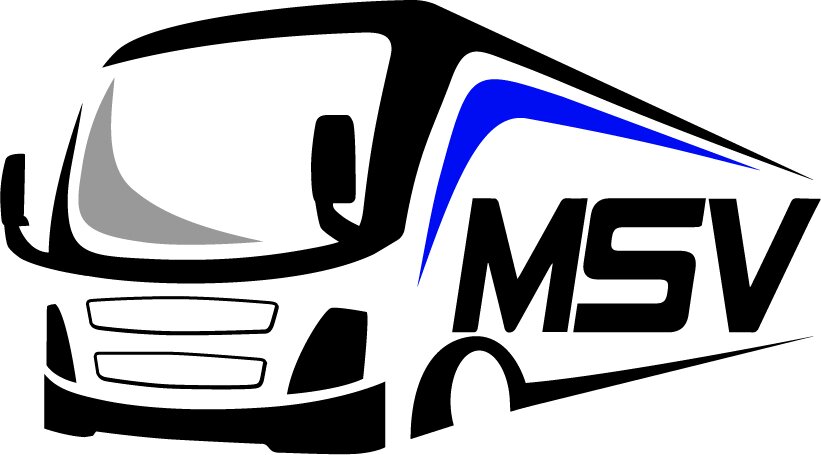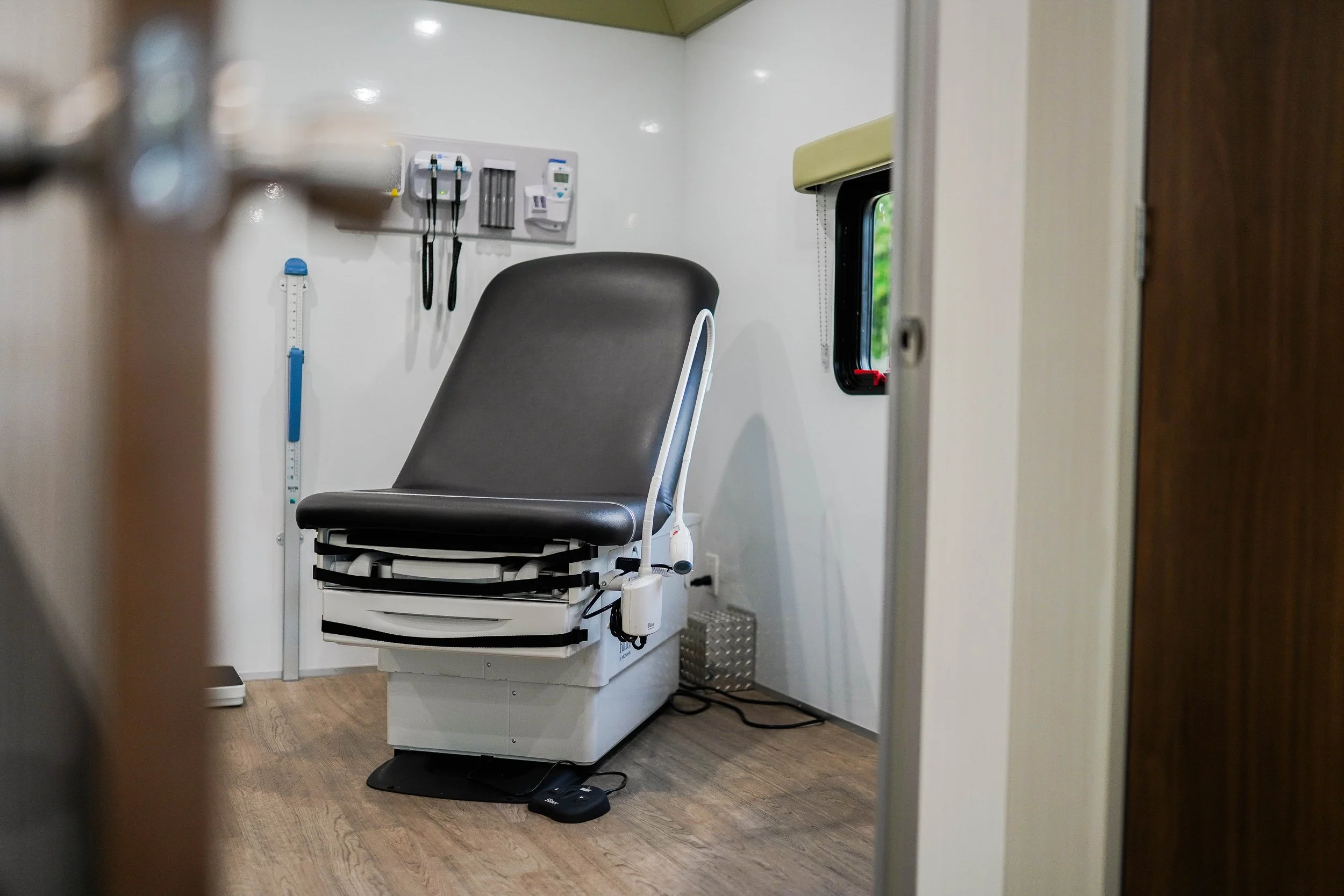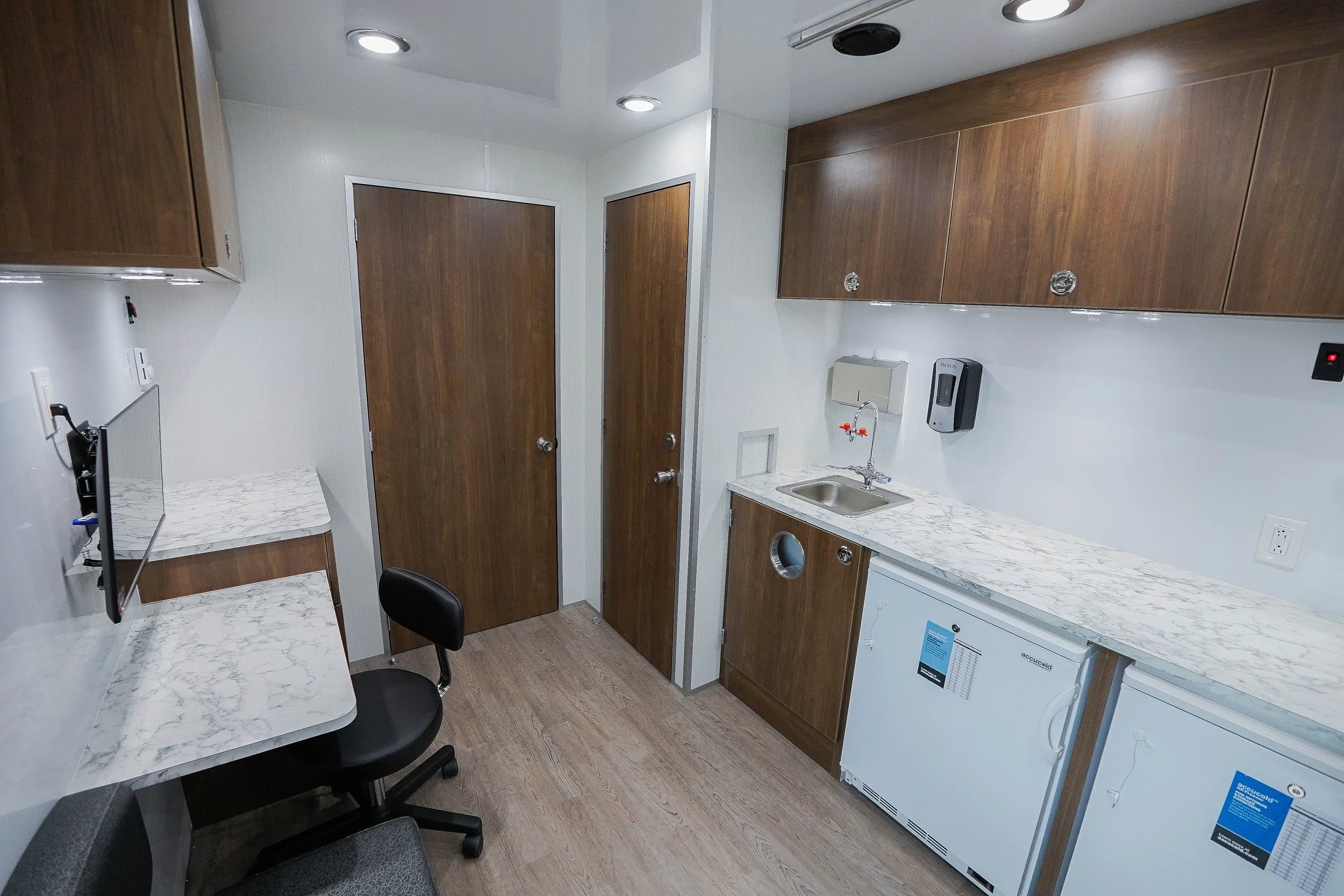
Getting Real: How to Design, Specify & Budget for a Mobile Healthcare Program
Getting Real: How to Design, Specify & Budget for a Mobile Healthcare Program
Running a mobile health unit is more than “put equipment in a van and go.” If you want to request funding, you must know both what you need and how much it costs—with credible numbers behind it. This guide offers practical steps to help you design, specify, and budget confidently for your next program.
1. Ground Your Design in Program Goals — Not Technology Fads
Before jumping into chassis, equipment, or finishes, get firm on what your program must deliver. These early decisions steer cost, layout, and specs.
Start with services. Are you doing immunizations, screenings, primary care, dental, lab work, tele-health, or combinations? Each has distinct infrastructure needs (power, plumbing, isolation, storage).
Map patient flow. How many patients per day? How many staff? What’s your peak load?
Define site constraints. Will the unit park on narrow streets? Require tight clearances? Need generator access?
Think flexibility. Medical priorities evolve. Over-customizing for one specialty can limit you later.
Engage clinical staff early. The people doing the work will flag awkward ergonomics and workflow issues before they become expensive to fix.
If you skip this step, cost creep and inefficiencies follow.
2. Be Precise in Specifying — Don’t Let “Premium” Hide Unknowns
Once you’ve outlined your program, move into design and engineering—but stay vigilant. Vague specs invite surprises.
Chassis & base vehicle. Match to payload, serviceability, parts network, and site footprint.
Power & electrical. Define power per zone (lighting, HVAC, instruments). Specify tolerances and redundancy.
HVAC, ventilation, plumbing. Plan early for waste systems, sterilization, and water flow—retrofits are costly.
Structural modifications. Roof cut-ins, reinforcements, anchoring for heavy gear—all require engineering.
ADA & compliance. Ramps, lifts, door widths, and accessible bathrooms—specify them to code.
Connectivity & IT. Telehealth, networking, and redundancy—each has both hardware and ongoing costs.
Materials & finishes. Focus on cleanability and durability, not aesthetics alone.
Testing & validation. Factor in inspection, certification, and regulatory fees from the start.
Avoid blanket terms like “hospital grade” without clear definitions or documentation.
3. Build Your Budget in Layers — Base, Program, Ops, Contingency
Think of your budget as layered, not linear. Each layer builds clarity and credibility.
Start with the base vehicle—the chassis and structural shell. Pricing fluctuates with supply chain conditions, so secure quotes early.
Add program customization, which covers medical equipment, interior buildout, and finishes. This phase can easily double or triple the cost of the base vehicle.
Include compliance and safety systems such as ADA lifts, HVAC, and environmental controls. These elements are often overlooked until late in design, but they’re essential for certification.
Don’t forget connectivity and IT infrastructure—data networks, telehealth integration, and recurring software or licensing costs.
Then factor in testing and certification, which vary by state and regulatory body. Add training and commissioning for staff, system orientation, and maintenance basics.
Finally, plan for operations and maintenance—fuel, insurance, parts, and consumables. For many programs, this averages around $275,000 per year but varies widely. Add a contingency buffer of 10–20% to handle inflation and unforeseen expenses.
Funders appreciate when you can show not just total cost, but what’s behind it.
4. Collect Data, Document Assumptions, Vet Sources
Budgets without documentation don’t hold up. Build defensibility into your process.
Gather multiple vendor bids (at least three).
Request line-item breakdowns—not lump sums.
Benchmark against peer programs in your region or sector.
Account for inflation and escalation (3–5% annually).
Model “minimum viable,” “mid-tier,” and “high-end” builds.
Keep a record of assumptions and data sources.
Flag risks and optional components separately.
Refresh your numbers periodically to stay current.
5. Align the Budget with the Funding Strategy
Knowing your numbers is half the work. Presenting them strategically is the other half.
Separate capital and operating costs. Funders often treat them differently.
Phase your project. You may secure capital first, then expand capacity later.
Show measurable impact. Cost per visit, population served, improved outcomes—all build confidence.
Provide flexibility. Offer options at different budget levels.
Sustainability plan. Show you can maintain operations, not just launch.
Highlight partnerships. Contracts, sponsorships, or reimbursement streams demonstrate long-term viability.
6. Common Pitfalls & How to Avoid Them
Over-specifying features that sound nice but don’t add value.
Ignoring depreciation and future replacement.
Underestimating travel, wear, and maintenance.
Poor coordination between systems (wiring, plumbing, IT).
Failing to verify weight and load distribution.
Designing layouts that hinder workflow or accessibility.
Forgetting ongoing costs like insurance and consumables.
Presenting a single lump-sum budget with no transparency.
7. Know the Range — and Know What You’re Paying For
Vehicle pricing in mobile healthcare varies widely. Depending on the platform, conversion type, upfit complexity, medical equipment, and technology integrations, you could see figures anywhere from $100,000 to well over $1 million.
That range can sound intimidating—but it’s manageable if you approach it methodically.
Be prepared. Start your budgeting process early. Prices fluctuate with chassis availability, material costs, and vendor lead times.
Get multiple quotes. Every vendor has different build approaches and capabilities. Collect detailed, itemized proposals to understand what’s included—and what’s not.
Compare carefully. Don’t just look at the total. Review differences in materials, system design, and long-term serviceability.
Ask questions. If something is unclear, use your resources. Your vendors should be able to walk you through tradeoffs, explain features, and justify costs.
Lean on your network. MHA members are a deep well of collective experience—use that council to vet quotes, confirm realistic costs, and spot red flags.
Know your product. Understanding what you’re buying—not just how much it costs—protects your program’s long-term success.
The right number isn’t just “the lowest bid.” It’s the one that reflects your mission, compliance requirements, operational realities, and the support you’ll need over the vehicle’s lifespan.
8. How to Use This in a Grant or Pitch
Start with a clear narrative: who you serve, why mobility matters, and how your design delivers on that.
Present a phased build—funders love visible early impact.
Attach your layered budget (capital, operating, contingency).
Provide sensitivity analyses (“if we scale X down, we save Y”).
Be transparent about assumptions and risks.
Compare to peer programs to show benchmarks.
Include vendor quotes, photos, or design examples that make the proposal tangible.
Ready to Get Started?
When you’re ready to move from planning to action, connect with Matthews Specialty Vehicles. Our team has decades of experience helping organizations translate mission and vision into fully realized, road-ready mobile healthcare units. Whether you’re exploring concepts, refining specs, or collecting funding data, they can help you navigate each step with clarity and confidence.
Your next mobile healthcare project starts with one conversation—get started today.




